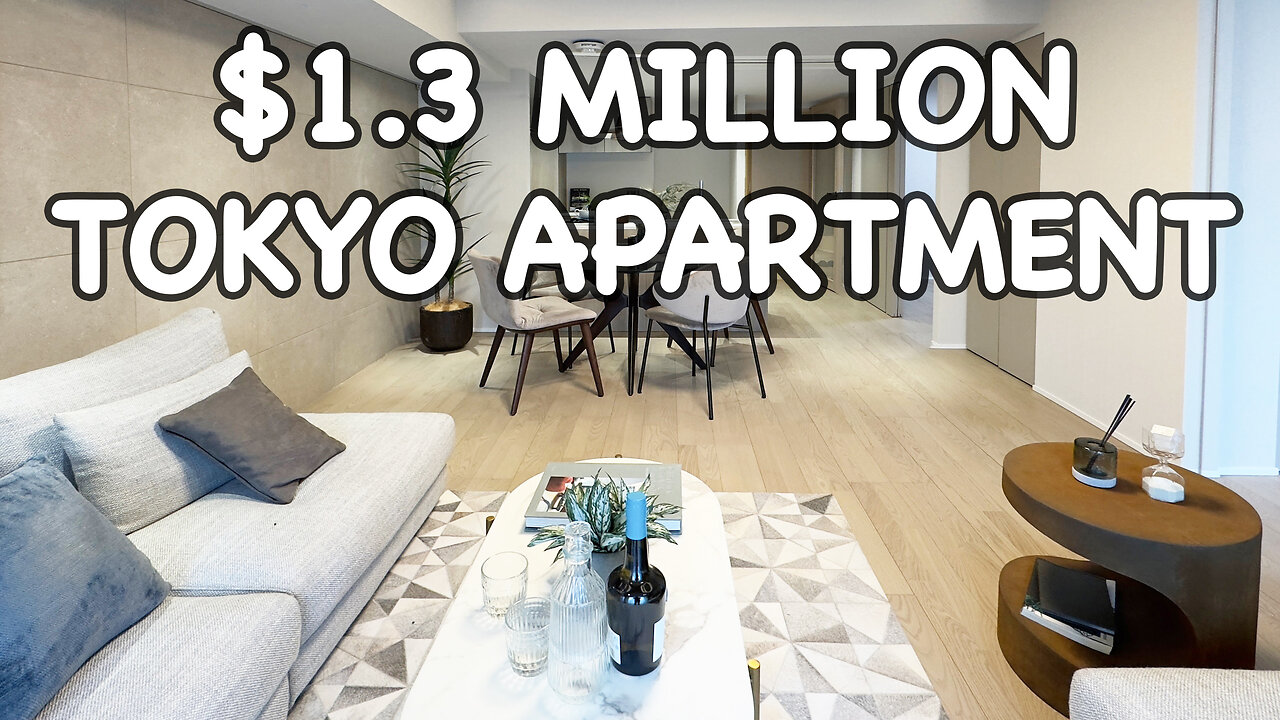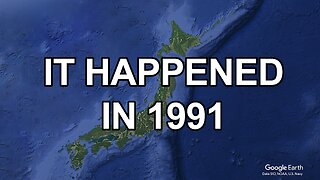Premium Only Content

How much is a LUXURY apartment in Tokyo? 🏠
👉 WATCH NEXT 👈
$6 Mil apartment in central Tokyo: https://rumble.com/v5xj4yz-inside-a-6-million-central-tokyo-luxury-apartment.html?mref=6xr1x&mc=45f6u
Today's apartment: https://www.americanlife.jp/properties/%E3%83%96%E3%83%A9%E3%83%B3%E3%82%BA%E5%85%AD%E6%9C%AC%E6%9C%A8-317%E5%8F%B7%E5%AE%A4
American Life Real Estate: https://www.youtube.com/@americanliferealestate/videos
Vocabulary:
2LDK 2 bedrooms, living room, dining room, and kitchen
寒い さむい cold (for weather)
冬 ふゆ winter
物件 ぶっけん property (as in home)
洋室 ようしつ western-style bedroom (no tatami mats)
大理石 だいりせき marble
ポトフ Pot-au-feu (French dish of boiled meat and vegetables)
ほぼほぼ almost
まちかね(の) long-awaited
平成時代 へいせいじだい Heisei era (Jan 8, 1989 to April 30, 2019)
令和時代 れいわじだい Reiwa era (May 1, 2019 to present)
食事する しょくじする to eat
ここで食事がしたい ここでしょくじがしたい I want to eat here
憧れる あこがれる to long for, to admire, to yearn for
乾杯 かんぱい cheers (said before drinking)
港区 みなとく Minato Ward (area containing Roppongi)
出身 しゅっしん born in (place)
港出身 みなとしゅっしん born in Minato Ward
Note the difference between 出身 and 生まれ
Example: “born in Minato Ward” is 港出身 but “born in 1998” 1998生まれ
珍しい めずらしい rare, unusual
壁紙 かべがみ wallpaper
特殊な とくしゅな special
落ち着いた色 おちついた calm color
テレワーク working from home
プラモデル plastic model
お洒落 おしゃれ beautiful, fashionable
化粧する けしょうする put on make up
化粧品 けしょうひん make up
縁 ふち edge
カビ mold
高級ホテル こうきゅうホテル luxury hotel
梅雨 つゆ rainy season
夏 なつ summer
春 はる spring
冬 ふゆ winter
秋 あき autumn
四季 しき 4 seasons
Yシャツ dress shirt (because they’re shaped like a Y)
CM commercial (TV)
ちなみに by the way
1億円 100 million yen
Note: とか is used often in informal conversation when listing things in a non-exhaustive way, signaling that there are more items that can be listed.
Think of it as an informal way of saying など
魚とかステーキとか好きです。I like things like fish, steak, and so on.
みんな is translated as “everyone” but it can also apply to inanimate objects
みんな高いと思います I think they’re all expensive, or everything is expensive.
とんでもない unbelievable
Note: とんでもない can also be used to say, “No problem.”
Example:
A:ありがとうございます。
B:とんでもないです。
仲介 ちゅうかい intermediary
手数料 てすうりょう fee
過剰な かじょうな excessive
暗算な数字 あんざんなすうじ doing math in one’s head
100万 1 million
売主 うりぬし seller
NOTE: The phrase "よろしくお願いします" (よろしくおねがいします) is a versatile Japanese expression that can have different translations depending on the context. Here are some serious and commonly used translations:
Nice to meet you - Used when meeting someone for the first time, particularly in a professional or formal setting.
Example: "I'm Tracy, nice to meet you" when introducing oneself.
Please take care of it - When you're entrusting something to someone or asking for their cooperation.
Example: After asking someone to handle a task, you might say this to show your reliance on them.
I look forward to working with you - Often used at the start of a business relationship, partnership, or project.
Example: Starting a new job or project with someone.
Please take care of me - This can be used when you are in a position where you need someone's guidance or support, like starting a new job or joining a new team.
Example: A new employee might say this to their new colleagues.
Please do your best - When you want to encourage someone to do well with whatever they're about to undertake.
Example: Before a performance or event.
Thank you in advance - When you're asking for a favor or expecting someone to do something for you.
Example: After making a request, this can be a polite way to acknowledge their future effort.
Please be kind to me - This can be used in situations where you're asking for leniency or kindness, often in a humbling or submissive context.
Example: When asking someone more senior or experienced for guidance.
Social media:
Instagram: https://www.instagram.com/weeklyfascination
X: https://twitter.com/WFascination
Podcast: https://rumble.com/c/c-1470193
-
 4:33
4:33
Weekly Fascination Fun
17 days agoWhat happened in Japan in 1991?
9 -
 5:07:42
5:07:42
Viss
5 hours ago🔴LIVE - PUBG EXTRACTION SHOOTER CONFIRMED BY END OF YEAR! - PUBG
9983 -
 1:49:27
1:49:27
The Sage Steele Show
4 hours ago $5.76 earnedMy Parents! Mona and Gary | The Sage Steele Show
17.8K6 -
 57:31
57:31
Russell Brand
4 hours agoHalf of Congress Are Millionaires… Now They Want to Ban Insider Trading? – SF576
115K57 -
 1:03:08
1:03:08
Sean Unpaved
3 hours agoNBA Elimination Battles & Pittsburgh's Safety Wake-Up
35.6K3 -
 1:03:00
1:03:00
Jeff Ahern
1 hour agoThursday Thrash With Jeff Ahern
2.63K1 -
 34:40
34:40
CryptoWendyO
2 hours ago $0.89 earnedCRYPTO MARKET CAP HITS $3 TRILLION BIG STABLECOIN NEWS
15.1K2 -
 5:55
5:55
Talk Nerdy Sports - The Ultimate Sports Betting Podcast
1 hour ago5/1/25 - May 1 Picks Are CRIMINAL… This Card Might Go 12-0 💰⚾🏀🏒
5.82K -
 2:05:15
2:05:15
Steven Crowder
7 hours agoTrump's Ukraine Mineral Deal Explained: How this Could Effectively End the War
443K257 -
 1:24:58
1:24:58
Simply Bitcoin
4 hours ago $1.81 earnedCONFIRMED: Wall Street Giants FIGHTING Over The Last 1.2M Bitcoin! | EP 1235
33.8K2